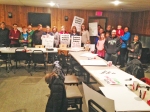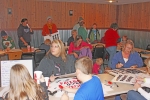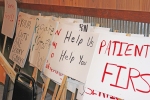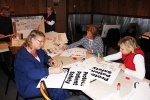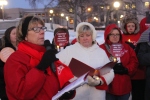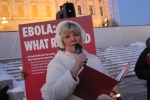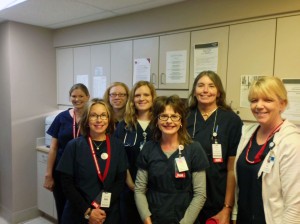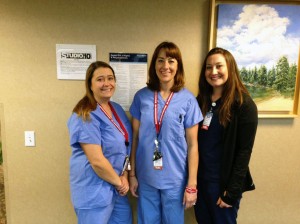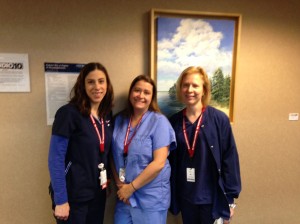Hospitals Blatantly Disregard Minnesota Law
Patients, nurses, healthcare workers, and Minnesota citizens won a hard-fought victory in the 2013 legislative session when Governor Dayton signed into law the Staffing Plan Disclosure Act. The purpose of the Act was to increase hospital transparency and study the effects of nurse staffing on patient outcomes. Unfortunately, Minnesota hospitals have all but thumbed their nose at the state law, openly flaunting the demands of legislators and citizens alike.
Minnesota Department of Health Cites Lack of Hospital Cooperation
In order to study nurse staffing under the law, the Minnesota Department of Health convened a workgroup consisting of nurses, hospital administrators, and other key stakeholders. To limit the burden of the study on Minnesota hospitals, the workgroup agreed that study data would be requested from only a small sample of state facilities, and that smaller, critical access hospitals would be excluded. Furthermore, the workgroup agreed that the information to be requested would consist of data already collected or readily available to hospitals, further limiting any potential burden on hospitals selected for the study. Minnesota hospitals, as represented in the MDH workgroup, agreed to these limitations and study parameters.
Regrettably, of 40 hospitals selected for inclusion in the legally mandated Staffing Plan Disclosure Act study, only one provided the required data. This egregious disregard for Minnesota law is unacceptable.
Minnesota Department of Health Finds Strong Evidence in Favor of Increased Nurse Staffing
Despite the complete lack of cooperation from Minnesota hospitals, MDH went ahead with the study in the form of an extensive literature review. According to the Department, “[Our] review of the extensive literature found strong evidence linking lower nurse staffing levels to higher rates of patient mortality, failure to rescue and falls in the hospital. There is also strong evidence that other care process outcomes such as drug administration errors, missed nursing care and patient length of stay are linked to lower nurse staffing levels.”
Nurse Staffing in Minnesota Hospitals is Getting Worse
Despite decades of robust research associating ideal nurse staffing with optimum patient outcomes and care, nurse staffing in this state is getting worse. Minnesota Nurses Association nurses self-report unsafe nurse staffing through a Concern for Safe Staffing Form, which is shared with first line supervisors and the Association.
In 2014, Minnesota nurses documented 2,148 instances of unsafe staffing with the potential to substantively impact patient care. Even one such instance would be concerning—but even scarier is that the reported rate of unsafe staffing has doubled over the past three years. Minnesota hospitals are not getting safer, they’re getting worse. This level of unsafe staffing is simply unacceptable for a state seen as a leader in healthcare.
Minnesota Hospitals are Becoming More Unsafe
In 2013, 80% of Minnesota hospitals reported preventable adverse events, representing over 96% of all Minnesota hospital beds. These events can include pressure ulcers, objects retained during surgery, completing the wrong surgery or operating on the wrong body part, medication errors, and many others. They are often referred to as “never events,” since they are so preventable that they should never occur. Unfortunately, over the past ten years, Minnesota patients experienced 2,200 preventable never events, and in 2014, Minnesota patients suffered 258 never events—99 of which resulted in death or serious disability. Proper nurse staffing is the best way to prevent such adverse events.
Other studies and government agencies have found the quality of care in Minnesota hospitals is declining. Minnesota’s overall healthcare quality score fell 11 percent, according to the Agency for Healthcare Research and Quality (AHRQ), and Minnesota now ranks 15th on watchdog group Leapfrog’s Hospital Quality Safety Score, falling from top 10 status. In fact, only 30% of Minnesota hospitals received an “A” grade—down from 43% two years ago. It goes without saying, however, that every Minnesotan deserves “A” quality care.
Another way to measure proper nurse staffing is through the percentage of patients who are readmitted to a hospital within 30 days of their initial hospital visit. Oftentimes, these readmissions are linked to care that nurses simply were not able to provide due to the lack of a limit on the number of patients a nurse can care for at one time.
In fact, hospitals can be penalized for these readmissions, costing them more money in the long run due to unsafe staffing. In 2014, 36 Minnesota hospitals were penalized by the Center for Medicare Services for high volumes of readmissions, with an average penalty of 0.4% of all Medicare payments. Alarmingly, the average penalty has doubled in the past year, showing that hospitals are getting worse at providing safe nurse staffing. Again, as the research indicates, nursing care is instrumental to proper quality care for patients, and has been shown to reduce readmission rates. Setting a standard for the maximum number of patients a nurse must care for at one time would go a long way to reducing readmission rates and halting the slide in hospital quality of care.
Specific Examples
1. Sanford Bemidji Medical Center
Sanford Bemidji Clinic is one of 36 hospitals in the state which receives Medicare readmission penalties. Sanford-Bemidji reported 2 preventable adverse events resulting in serious disability last year.
Sanford-Bemidji has the dubious distinction of having the one of the highest rates of nurse-reported unsafe staffing incidents, with 188 such incidents potentially impacting patient care just last year. Indeed, according to the Leapfrog Group’s hospital safety scorecard, Sanford-Bemidji received one of the lowest safety grades in the state last year, a “C.” Average is not good enough for Minnesota hospitals. In fact, Sanford scored well below the state average in areas including treatment of collapsed lungs, serious breathing problems, and accidental cuts and tears.
Sanford’s surgical safety scores are even more concerning. Sanford again scored well below the state average in use of antibiotics before surgery, use of the correct antibiotics, removal of the catheter after surgery, steps to prevent blood clots, the rate of urinary tract infections during ICU stays, and surgical site infections after colon surgery.
Sanford’s score in physicians specially trained to care for ICU patients is 6 times lower than the state average. Sanford declined to report other measures relating to nurse staffing and care, as well as use of standard safety procedures.
Sanford-Bemidji Medical Center is below state averages in all areas of consumer assessments. This includes whether a patient would recommend the hospital, whether staff gave patients information, whether the room was clean and quiet at night, whether pain was well controlled, whether staff explained procedures, whether they understood their care when they left their hospital, and whether doctors and nurses communicated well. Notably, Sanford scored 23% lower than the state average on whether “patients always received help as soon as they wanted.” These assessment scores indicate poor nurse staffing.
Consumer reports rates Sanford 33 out of 42 ranked hospitals in the state, and gives Sanford a 52 out of a possible 100 for its safety score. CR rates the hospital’s infection avoidance as “worst.” Consumer reports also gives the hospital below average scores for communication regarding hospital discharge and the worst score for communication about drug information. Both scores can be attributable to improper nurse staffing.
Unlike 140 other Minnesota hospitals, Sanford Bemidji declined to report its quality data to the non-profit Minnesota Community Measurement.
2. United Hospital of St. Paul
In 2014, United Hospital nurses reported 271 incidences of unsafe staffing with the potential to harm patient care. This may be a factor in the 13 preventable adverse events suffered by United patients in the past year, 6 of which led to serious disability.
United Hospital grades out at a “B” for patient safety and quality, according to the Leapfrog Group. United is well below the national average in measures of care including serious breathing problems, death from treatable complications, use of antibiotics before surgery, blood or urinary infections during ICU stays, and dangerous objects left in a patient’s body. United declined to report data which measures appropriate staffing.
Patients at United report that they received help when needed at a rate lower than the state average, a typical function of sub-optimal nurse staffing. United also scored lower than state and national averages in indicators such as nurse and physician communication, pain management, appropriate explanation of medications, cleanliness of rooms and bathrooms, quiet zones at night, and overall hospital score.
United Hospital ranked 28 out of 42 hospitals in Consumer Report’s MN hospital rankings. It received a 55 out of 100 for a safety score, and scored poorly in avoiding infections, avoiding death, and communication about hospital discharge. All are issues which can be attributable to improper nurse staffing.
The Necessary Response is Clear
Because Minnesota’s hospitals are becoming less safe, because they refuse to cooperate with the legislature, the Minnesota Department of Health and the law, because they are cutting corners with nurse staffing, and because the quality of care they provide is getting worse, we need to enact a solution to the problem: a safe staffing law. Such a law would limit the number of patients a nurse can care for at one time, ensuring that each patient receives the nursing care she needs and deserves. As the evidence indicates, and as the hospitals evidently don’t want you to know, this will result in better quality care, better patient outcomes, lowered patient mortality, and fewer never events. In the long run, a limit on the number of patients a nurse can care for at one time will even save hospitals money; there will be lower readmission penalties and less non-reimbursed care for hospital-acquired infections. A safe staffing bill isn’t just the right thing to do—it’s the smart thing to do.


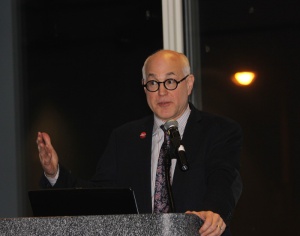 “passionate commitment” for their patients when advocating for change at the state and national levels to “transform our country.”
“passionate commitment” for their patients when advocating for change at the state and national levels to “transform our country.”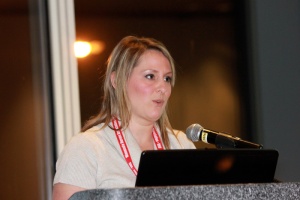 Schmidt said every hospital should have a plan to deal with crises. “I urge all nurses to get involved and stop thinking that workplace violence is part of our jobs. It is not.”
Schmidt said every hospital should have a plan to deal with crises. “I urge all nurses to get involved and stop thinking that workplace violence is part of our jobs. It is not.”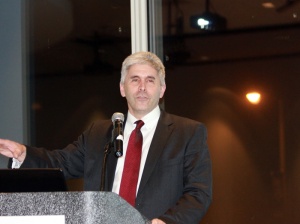 staffing and workplace violence prevention legislation.
staffing and workplace violence prevention legislation.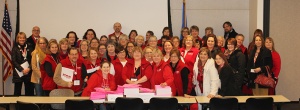
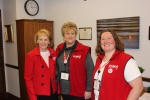








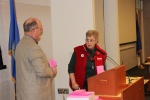


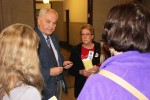

 m the University of Minnesota’s BSN program about 10 years ago, my classmates and I had a difficult time finding jobs. In fact, many of my peers were eventually forced to take on travel nursing assignments. Several are still in California, Missouri, and even Hawaii.
m the University of Minnesota’s BSN program about 10 years ago, my classmates and I had a difficult time finding jobs. In fact, many of my peers were eventually forced to take on travel nursing assignments. Several are still in California, Missouri, and even Hawaii.

